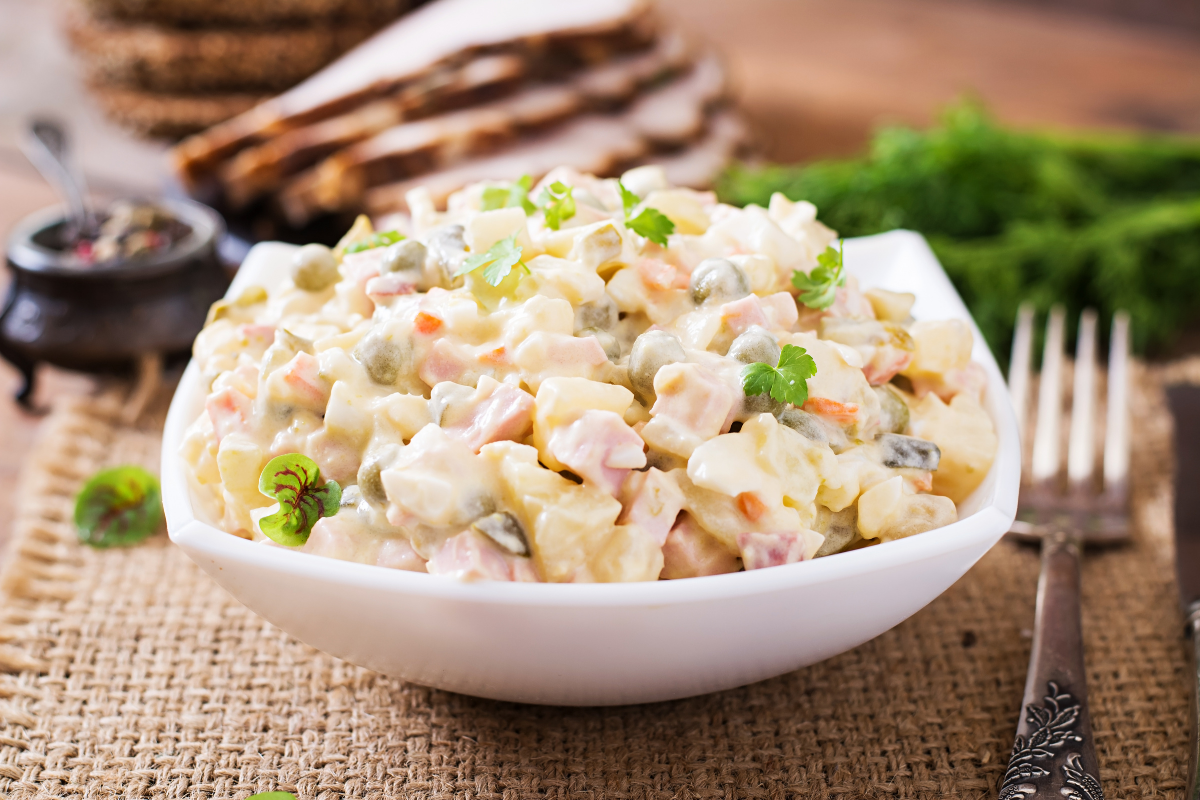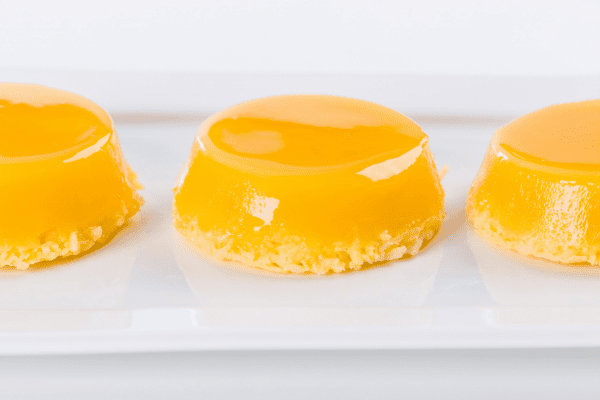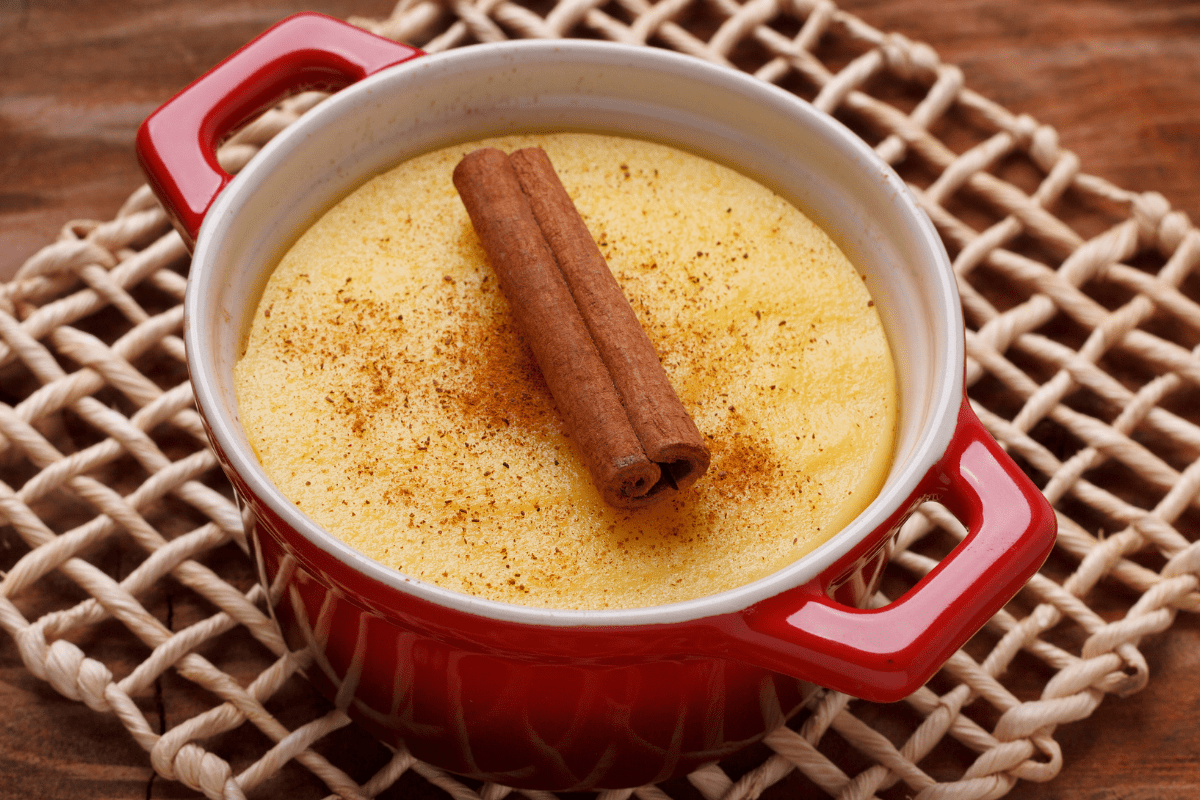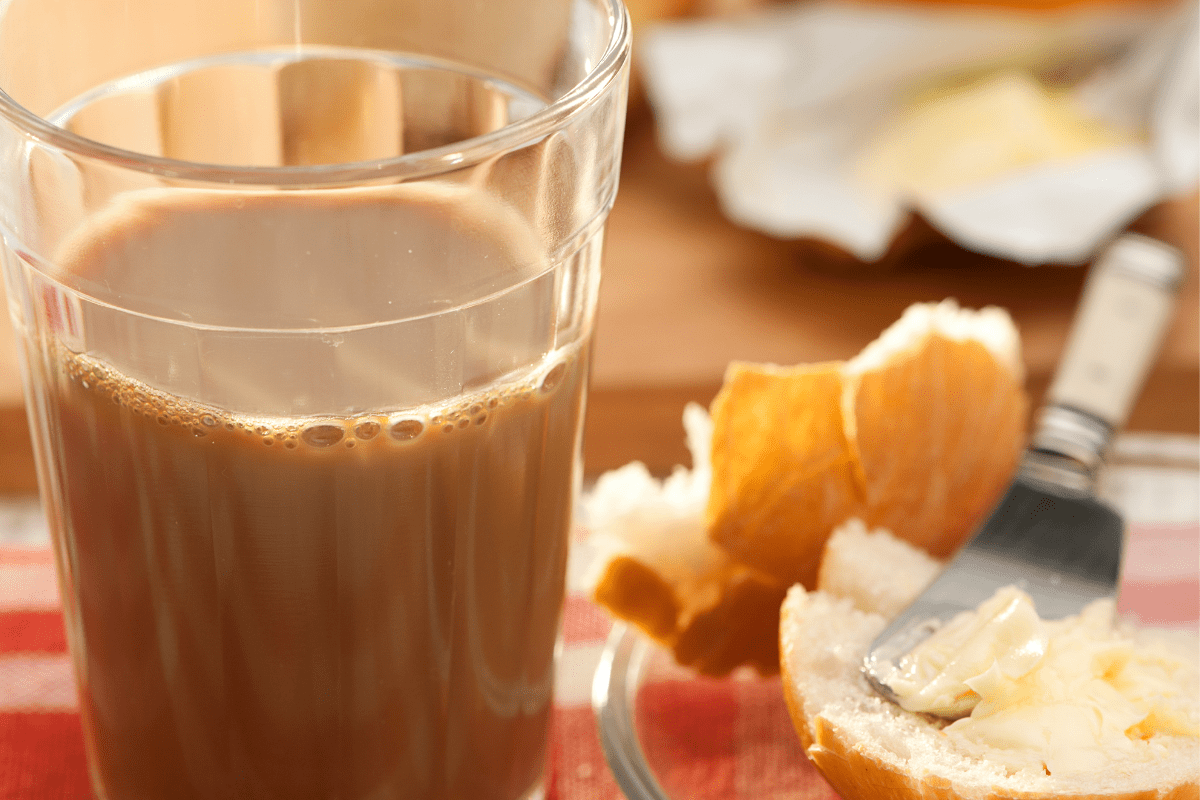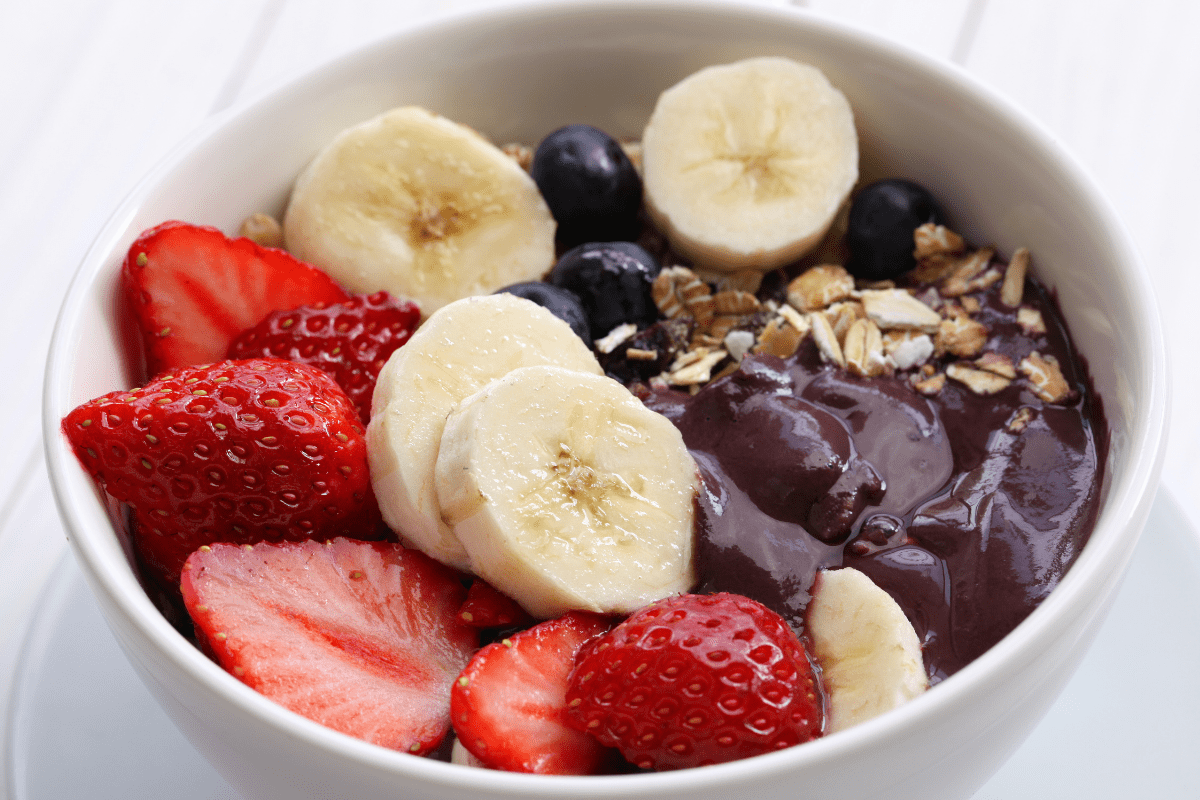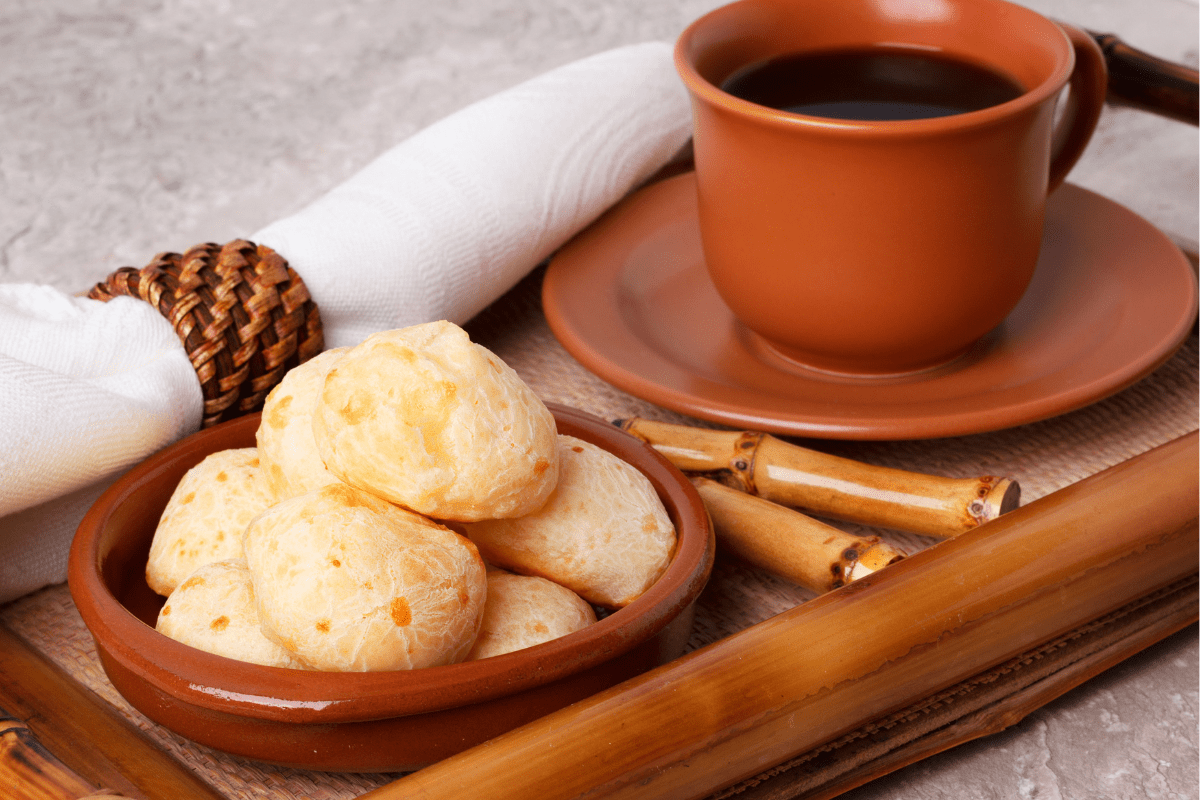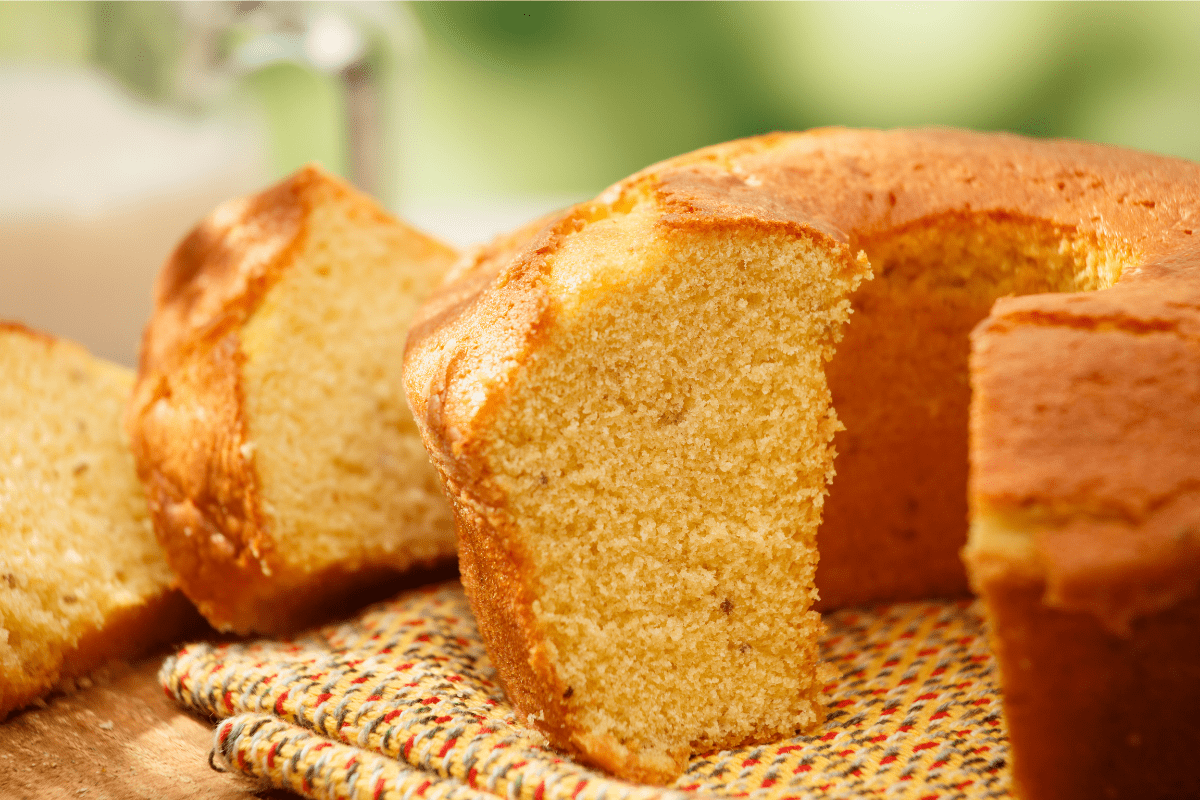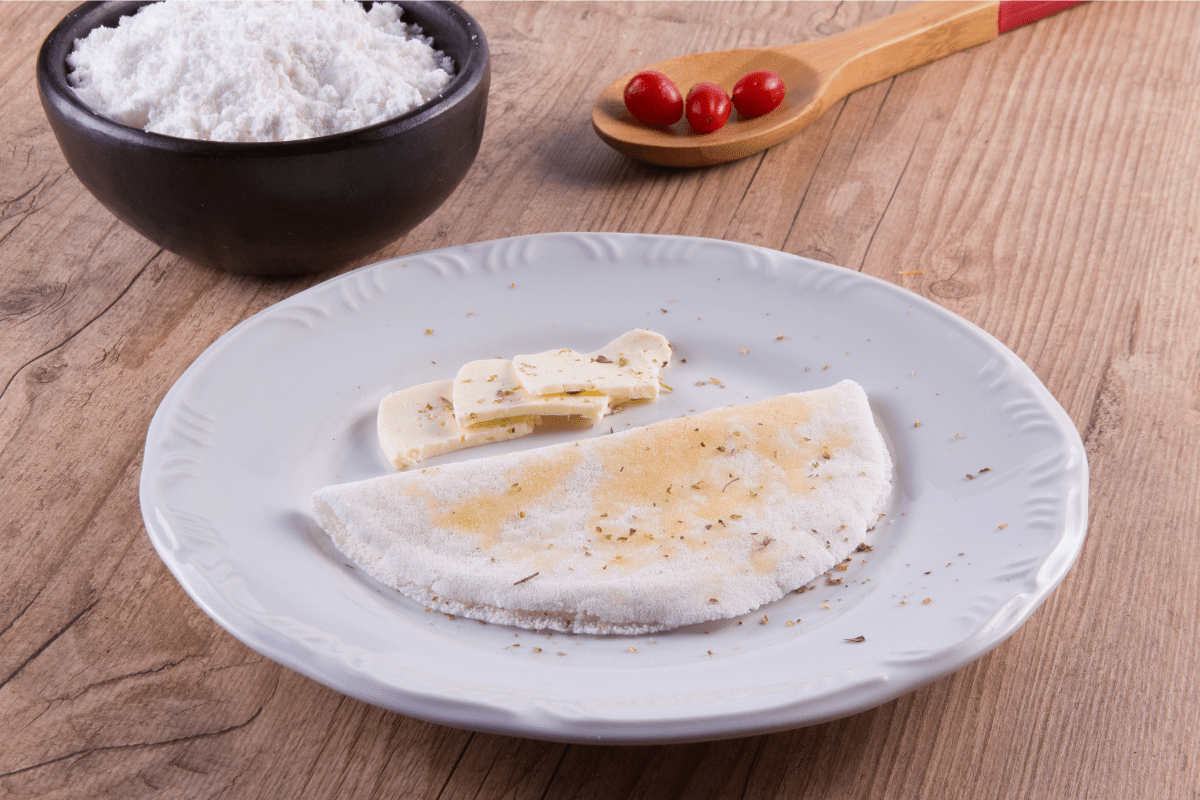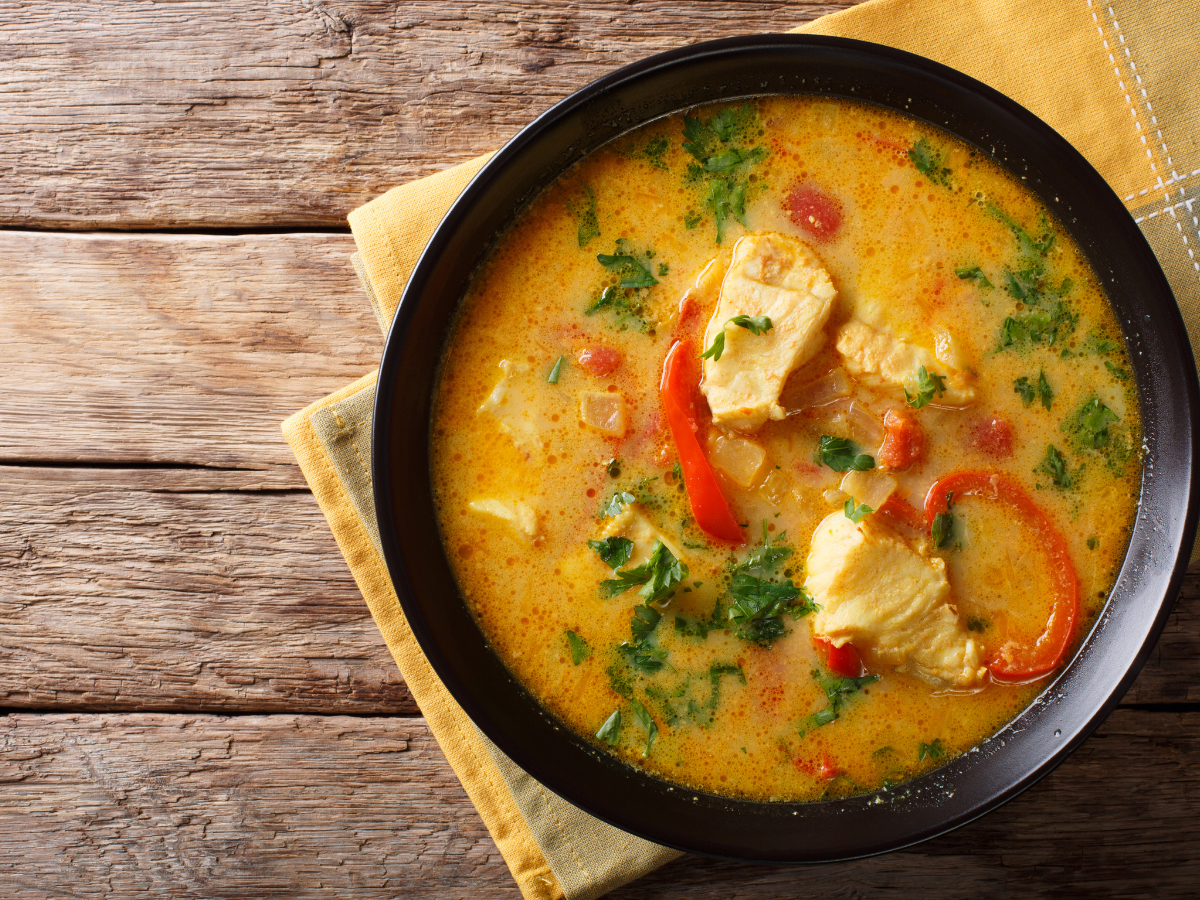
Seafood stew is another national favorite in Brazil. It is a surprisingly simple dish that happens to be keto-friendly and gluten free. It comes together in as little as 30 minutes, but we will be slow-cooking our stew over several hours to let the flavors really meld and blossom.
Like many dishes in Brazil, moqueca has many variations from region to region. A version in Espirito Santo is known as moqueca capixaba. It may include crab meat, prawns, lobster, or white fish, like bass or tilapia.
The Espirito Santo stew is unique for its reddish tint, created by adding tomato broth and annatto seeds (also known as achiote and urucrum). It is also served in a traditional pan made from black clay and glazed with mangrove sap. The finished stew may be accompanied by plantains, rice, and other dishes served in similar pans.
In Bahia, the stew incorporates coconut milk and dende (palm oil), ingredients found in many other recipes of the region. It is usually finished with fresh cilantro and served with rice and farofa.
Our recipe blends the two versions using coconut milk, palm oil, and achiote powder.
Common Questions When Making Moqueca
Do I have to use sea bass in fish stew?
No, you can use any white fish you like. Other great options are cat fish, tilapia, haddock, and cod.
Can I use shellfish in this moqueca recipe?
Yes, you can certainly use shellfish, like shrimp, lump crab, or lobster. Just add them at a later stage in the cooking process (about thirty minutes before the stew is done). Avoid using bivalves like oysters or clams, however, as these tend to become tough in the slow cooker.
Doesn’t the fish overcook in the slow cooker?
The slow cooker is actually an ideal environment in which to cook fish. The consistent temperature and relatively low heat result in tender and moist bites of fish that are anything but rubbery.
What if I don’t have red palm oil?
Like coconut milk, red palm oil is completely optional in this recipe. You can also substitute it with extra virgin olive oil, if you like.
Do I need to marinate the fish for moqueca?
Another great reason to use a slow cooker for moqueca is that you do not need to marinate the fish beforehand. It will have plenty of time to absorb all those delicious flavors.
Do I have to saute the vegetables first for slow cooker stew?
No, this is optional. Feel free to just put all the ingredients directly into the slow cooker.
Can I freeze moqueca for later?
Absolutely! Frozen moqueca will keep for up to three months.
Slow Cooker Fish Stew Recipe (Moqueca)
Ingredients:
16 oz sea bass filets (4-5 filets)
3.5 cups fish stock
¼ cup diced carrots
1 can of diced stewed tomatoes
1 small yellow onion, diced
3 cloves garlic, minced
1 can coconut milk
1 tbsp red palm oil or olive oil
¼ cup diced green chiles
1 cup diced red bell pepper (about 2 large peppers)
2 oz lime juice (2-3 limes)
1 tsp ground cumin
1 tsp annato powder (achiote)
Fresh cilantro for garnish
Directions:
- Preheat a saute pan over medium heat. Add in your palm or olive oil and saute diced carrots, bell pepper, onion until softened (about 2 minutes). Add in the garlic and cook until just fragrant (30 seconds or so).
- Put the cooked vegetables in the bowl of a 6 quart slow cooker. Put the fish filets on top of the vegetables and pour in fish stock, canned tomatoes, green chiles, and coconut milk.
- Stir in ground cumin, annato powder, and lime juice.
- Cook over low heat for 6 hours, or on high for 3.
- When ready to serve, ladle into bowls and garnish with plenty of fresh cilantro, a drizzle of red palm oil, and a squeeze of fresh lime juice. Enjoy!
Try Texas de Brazil’s Fish Stew
What’s even easier than this slow cooker recipe for moqueca? Having our fabulous chefs prepare it for you in one of our restaurants! Moqueca is one of several incredible side dishes we offer at our churrascarias, along with fried bananas, black beans with feijoada, lobster bisque, and more. Stop by one of our 50+ locations to enjoy authentic Brazilian cuisine in a delightful atmosphere.

